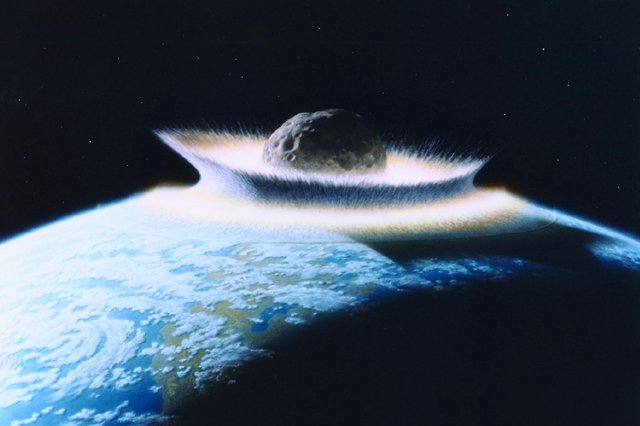Researchers suggests a newly discovered branch of asteroids belong to the Souther Taurids could pose a risk to planet Earth. Photo by rw/D. Davis/NASA/UPI |
License Photo
June 6 (UPI) -- A team of Czech scientists say they have discovered a new branch of meteors belonging to the meteor stream known as the Taurus -- a branch featuring asteroids that could pose a serious threat to Earth in the near future.
In a new study, researchers describe the branch as a "real source of potentially hazardous objects, which can be large enough to cause significant regional or even continental damage on the Earth."
The study was recently accepted for publication in the journal Astronomy & Astrophysics.
The Taurids are the largest stream of matter in the inner solar system and account for four separate meteor showers each year. As such, they are one of the most closely studied meteor streams.
Researchers believe the meteor stream is made up of fragments left behind by the breakup of at least one large comet some 30,000 years ago.
The newly discovered branch belongs to the Southern Taurids, which pepper Earth's skies with shooting stars and fireballs each fall, between October 25 and November 17.
Taurid meteor showers are reliable but not usually prolific. However, some years feature enhanced meteor activity. In 2015, the Southern Taurids provided an unusually large amount of extremely bright fireballs.
In the most recent study, astronomers with the Czech Academy of Sciences analyzed observations of the 2015 meteor shower recorded by the European Fireball Network. Their analysis suggests the uptick in Taurids activity experienced by Earth every few years can be explained by the newly identified branch of the Southern Taurids.
Analysis of the new branch revealed the presence of at least two asteroids measuring between 650 and 100 feet in diameter. The authors of the new study hypothesize that the branch likely hosts even larger asteroids.
"Although our data show that large Taurids have porous and fragile structure, objects of tens or hundreds of meters in size pose a hazard to the ground even if they have low intrinsic strength," the researchers wrote in the study.
This isn't the first time astronomers have warned of the hazards of the Taurids. Some astronomers believe meteorites delivered by the Taurids explain ancient collisions that plunged the planet into prolonged ice ages.
But one needn't travel back millennia to witness the dangers of the Taurids. Just over a century ago, in 1908, a 150-foot-wide Taurid meteor exploded in the sky above Siberia, releasing a force the equivalent of a 20-megaton nuclear bomb. The explosion leveled 400 square miles of forest. No one was hurt, but the glow of the fireball could be seen in Western Europe.















